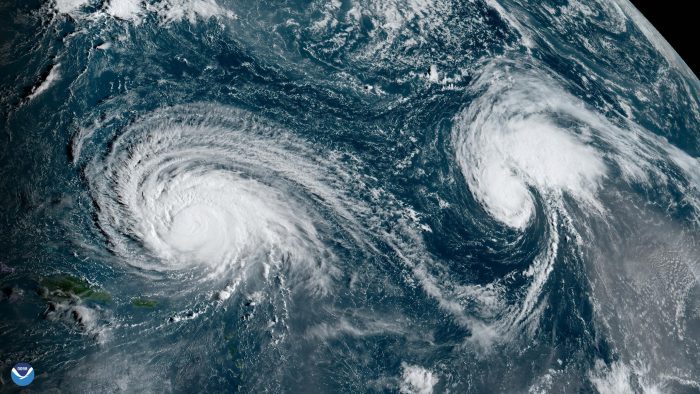City planners all along the eastern seaboard, meteorologists and people living in flood plains are all hoping the current projections for Hurricane Lee prove correct.
As of earlier this week, the hurricane, which became the fastest system to transition from a tropical storm into a Category 5 hurricane, was not expected to make direct landfall.
That, however, may only be a temporary reprieve, as the conditions that made such a rapid intensification of this monster storm, which, at one point, had wind speeds of 165 miles per hour, continue to exist during the rest of this hurricane season and will likely continue in future years.
Earlier this summer, a sensor off the coast of Florida recorded an ocean temperature of 101.1 degrees Fahrenheit, the highest ever recorded. That creates conditions that threaten marine life and provides the energy that fuels the growth and intensity of hurricanes.
“We know that the warmer the sea surface temperatures are that a storm interacts with, the increased likelihood that a storm will undergo rapid intensification,” said Kevin Reed, associate professor at the School of Marine and Atmospheric Sciences at Stony Brook University. As the Earth continues to warm, Reed added, he expects those conditions to persist.
The exact timing of when a storm will intensify “remains a significant challenge to the weather community,” Reed added. “These types of events continually remind us that we have some way to go in forecasting the intensity of storms, even over a couple of days’ time scale.”
While most of the models predict the storm will head north before tracking toward a potentially dangerous landfall, Reed added that “there remains a possibility that the storm could take a track that interacts with New York or New England” and that the hurricane is still multiple days away from the region.
At this point, Reed believes such a landfall is not impossible but is unlikely.
Even without a landfall nearby, forecasters warn that the storm could produce dangerous rip currents and rough waters around the middle Atlantic states toward the latter part of this week.
NOAA forecast
One of the first things Reed does each morning and the last thing he does in the evening is check the National Hurricane Center site, among others.
A month ago, the hurricane season, which runs from June 1 through Nov. 30, was relatively quiet.
At that point, the National Oceanic and Atmospheric Association updated its seasonal projection to suggest that the hurricane season would be above normal.
“Here we are, in the thick of things,” with multiple storms out there and high activity levels, Reed said. “It’s important to keep an eye on those storms. All it takes is one to make landfall in our region to have a lasting impact.”
Hurricane Lee is the fourth hurricane of the season and the 14th named storm, six ahead as of Sept. 9 of the average over the last 30 years, according to the National Hurricane Center data.
A Category 1 storm, Hurricane Margot, is moving northward in the Atlantic, where it is not expected to make landfall. Another two disturbances may also combine and form a tropical storm. If they do, the disturbance would be named Nigel.
Reed is currently working on a few projects in which he hopes to use climate information to help inform potential impacts of future storms in the local area and coastal regions.
He is looking back retrospectively at various storms to determine how those hurricanes might differ in a warmer world. Those projects, he said, are still in the early stages.
Well aware of the potential for strong storms to hit the area, Reed has looked at a flood map around his house to know where flood waters would go amid different conditions.
He has also talked with his family about what they would do during a storm and where they would get information in the event of an evacuation from New York.
“I try to practice what I preach,” Reed said.






